Volume 1: Hideyuki Saya, MD Ph.D.
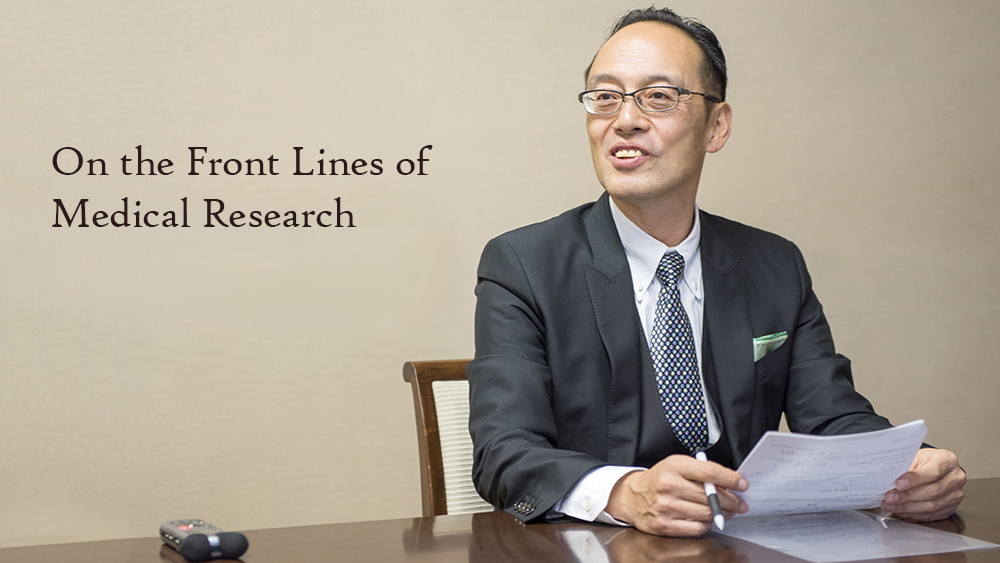
The Keio University Hospital Clinical and Translational Research Center (CTR) was launched in 2014 with a specific mission: to pioneer the latest advances in medicine. In this series, Dr. Mototsugu Oya, the CTR's Chief of Public Relations, talks with the center's leading clinical researchers about the current challenges and future goals of the center.
In this first interview, Dr. Oya sits down with CTR Director Dr. Hideyuki Saya to hear the story behind the center's establishment and its role in research.
Profile
Professor, Institute for Advanced Medical Research, School of Medicine, Keio University
Professor, Department of Urology, School of Medicine, Keio University
Bridging the Gap Between Basic Research and Clinical Practice
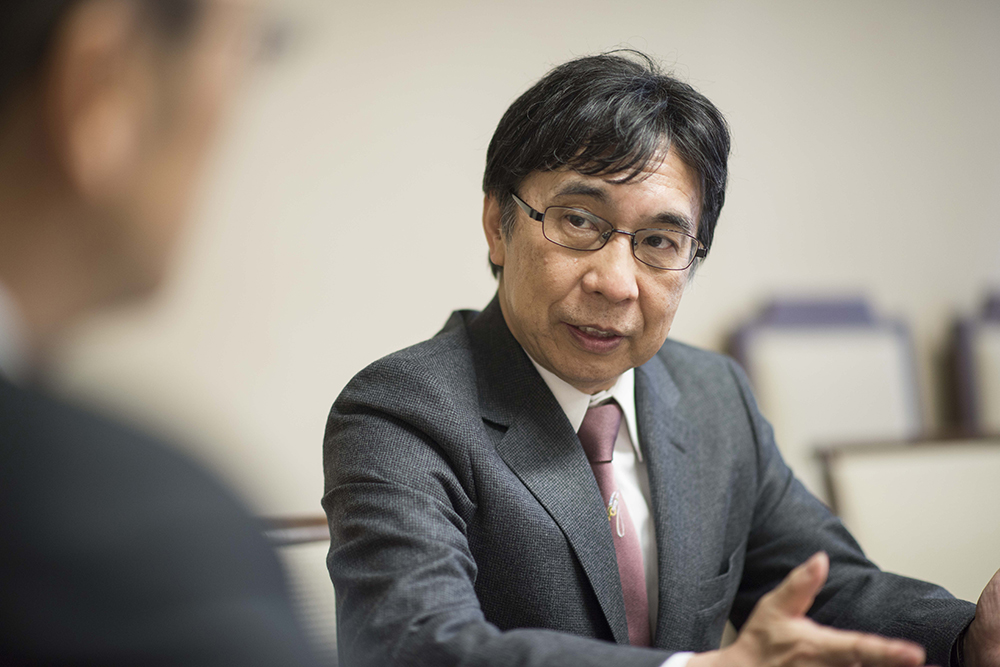
Oya: You became director of the Keio University Hospital Clinical and Translational Research Center (CTR) in 2015. Could you tell me why you decided to take on this position?
Saya: Well, I have long dreamed of helping to bring the results of basic research to the clinical field.
I began my career as a neurosurgeon but made cancer research my life's work after seeing the effects of intractable brain tumors. It's been over twenty years since I first devoted my career to basic research, but a strong desire to take my research findings to the bedside has led me to the research and development of new pharmaceutical and clinical applications. The big turning point for me was finding CD44, a cell surface molecule that gives treatment resistance to cancer cells. Presently, one of my focuses is on developing medicine for treatment-resistant cancer stem cells by targeting CD44. I believe these experiences in both basic and clinical research contributed to my appointment as director of the CTR upon its opening.
Oya: You could say that the CTR is based on the ideals of Dr. Shibasaburo Kitasato, the founder of Keio University School of Medicine, who taught that medical practice should integrate both basic and clinical research. I assume that you faced enormous challenges when taking basic research back into the realm of clinical development and application. Do you think your previous experience as a neurologist may have contributed to your success? Were former colleagues also a part of this process?
Saya: Absolutely. It is impossible to build a bridge between basic research and clinical application on your own. You need a team that consists of professional members from a variety of fields. At the CTR, I hope to bring together a team of specialists whom I've come to know over the years. From the beginnings of basic research to bedside application, the team will be able to support all stages of medical research and development.
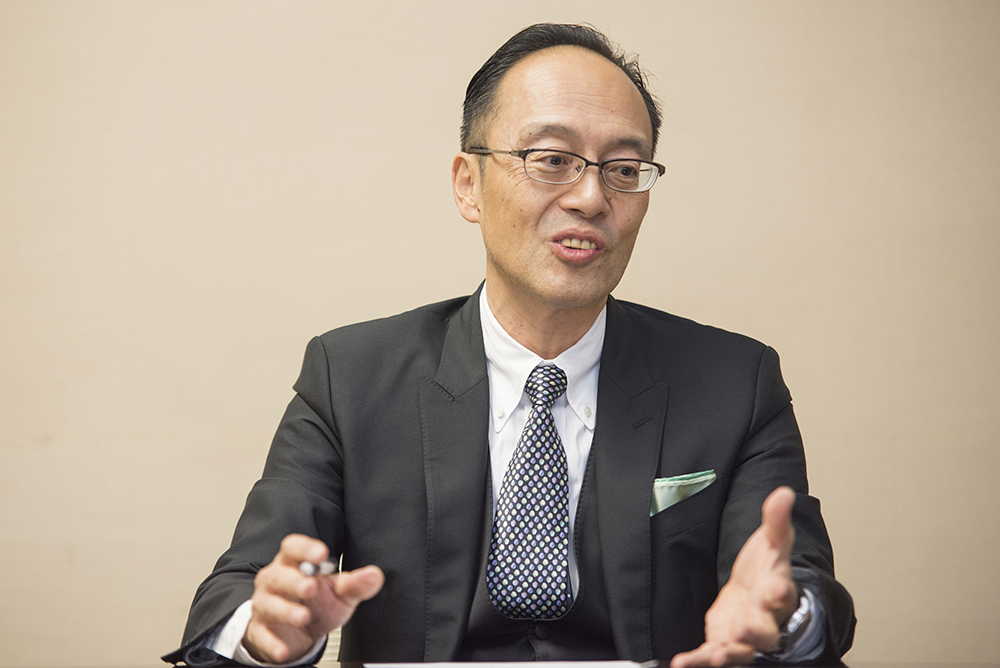
Oya: You might say that your team assists individuals doing basic research who don't know how to take that first step towards clinical research. Does the center assist in matching researchers with the private sector?
Saya: Yes, that is exactly what we do. One way to tie academia and the private sector together is to share university research findings with companies. If companies find the results of interest, oftentimes they can make pharmaceutical development a reality. Unfortunately, hardly any university research findings make it onto the market at present.
Oya: What is the reasoning behind this?
Saya: One reason is because most of Japanese academic researchers are not sufficiently aware of the importance of intellectual property or patent filing for commercialization. In fact, many researchers present their findings at academic meetings and in papers before filing for a patent. The fact of the matter is that most companies are apprehensive to commit to findings before rights to intellectual property are secured. One significant mission of our center is to help researchers obtain IP rights such as patents for their basic scientific findings. Another reason lies in the fact that researchers hesitate to plan and execute investigator-initiated clinical trials by themselves to obtain pharmaceutical approval due to procedural hurdles. For this specific reason, the CTR supports execution of clinical research in accordance with the standards of ICH GCP.
On the other hand, the role of the academic research institute is growing. Pharmaceutical companies tend to hesitate getting involved with intractable diseases and diseases with relatively few patients. This is where the academic sector can perform basic and translational research and contribute well-researched findings to the private sector for the development of new therapies for these diseases. That is why a team like ours needs to facilitate closer collaboration between universities and companies, which will in turn bridge the gap between basic research and clinical practice.
Oya: That is very true. No matter how interesting their findings may be, researchers hit a wall when the next step in their research involves corporate negotiations. They can find encouragement in the CTR, which will conduct a certain level of development and support to bring scientific findings to clinical application.
Saya: You're absolutely right.
Oya: I think the future of the CTR looks promising for academic researchers, especially those early on in their careers. They will be able to see a clearly mapped route through which their unique findings may become the pharmaceuticals and therapies of tomorrow, and this, in turn, raises motivation significantly. I particularly hope that early-career researchers will take advantage of the CTR.
Developing a Vocabulary for Clinical and Translational Research
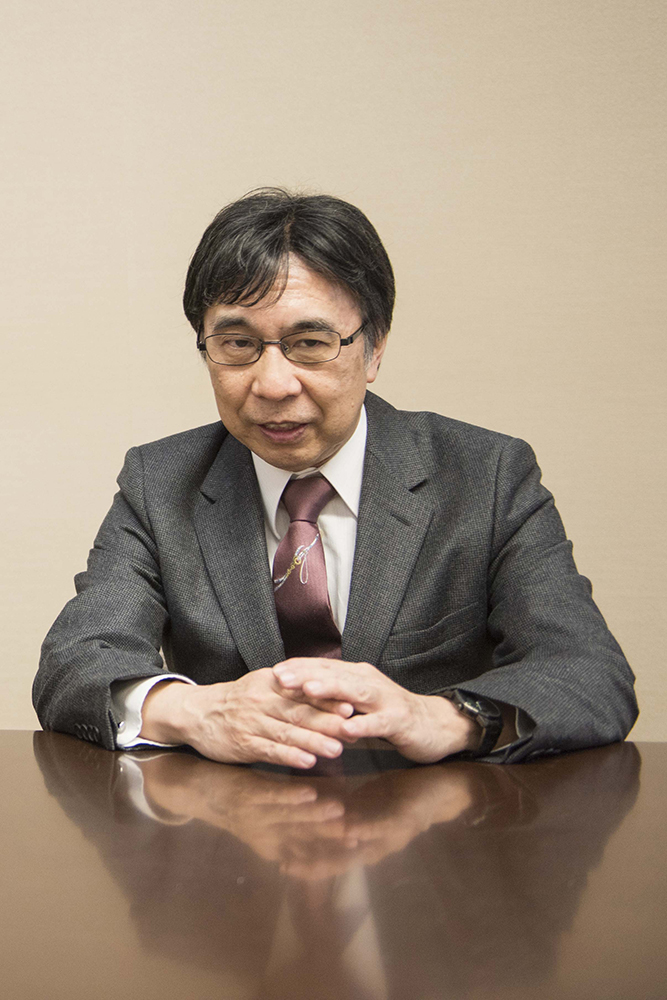 Oya: I sometimes hear the word "seeds" in meetings and symposia held by the center.
Oya: I sometimes hear the word "seeds" in meetings and symposia held by the center.
Saya: Yes, the Japanese government uses the word "seeds" to refer to research with the potential for medical research and development (R&D). "Seeds" is a direct reference to plant seeds, used here as an analogy to illustrate that basic research should grow clinical research that eventually reaches the bedside through pharmaceuticals, medical devices, and regenerative therapies. Here at the CTR, we classify the research projects, or "seeds," and provide research funding according to their respective R&D phases.
Oya: Without funding, research is simply not sustainable. Could you explain a little more about the systems in place at the CTR?
Saya: Sure. Our first condition is that intellectual property rights must be secured. Then, under this system we classify research into three phases: A, B, and C. The first phase, called "Seeds A," corresponds to early-stage basic research. After applying for a patent, the research project will move to the next phase, called "Seeds B," which corresponds to non-clinical research. During "Seeds B," researchers are expected to gain non-clinical proof of concept (POC) for both the efficacy and safety of their candidate compounds, devices, cells for regenerative therapy, and so on. After obtaining the non-clinical POC, the project will move on to "Seeds C," which refers to the clinical phase. The Japan Agency for Medical Research and Development (AMED) has a comprehensive funding system called the Translational Research Network Program, which system allows us to systematically manage and grow R&D projects. Particularly, AMED allocates a substantial amount of funding to selected Seeds B and C projects, though each project must be selected through rounds of competitive grant applications.
Oya: It seems like this comprehensive support system could motivate many early-career researchers.
The Future of MedicineーUniting Keio Today for A Better Tomorrow
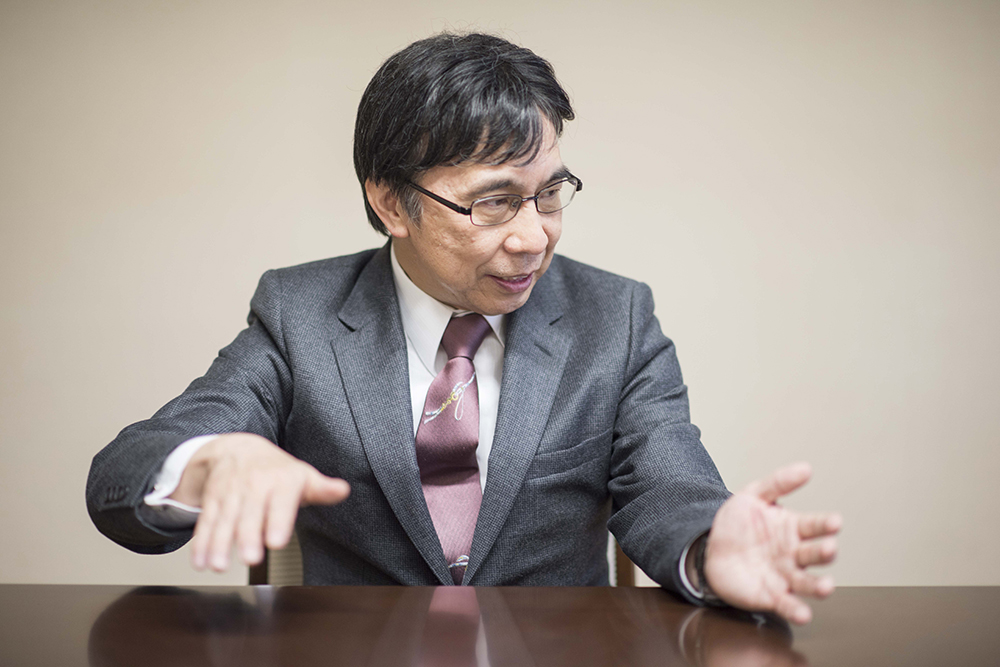
Saya: Support of clinical research is not the only responsibility our center has. Our team also plays an important role in raising morale. Now more than ever, Keio University Hospital must fulfill its role as a major research hospital where people can look forward to the development of new treatments, both nationally and globally. The hospital's position will keep doctors extremely busy and may even lead to a decrease in motivation. We must keep in mind that doctors' motivation and their sense of duty are major sources of clinical development and adjust accordingly. Efficiency must be a priority for working conditions in order to allow doctors to work to the best of their abilities.
Oya: Doctors at Keio do a good job balancing their research, clinical practice, and training to students. But clinical practice does seem to occupy their time, so much that many doctors spend their evenings and their days off doing research. Their dedication is truly astounding.
Saya: Another important point that I'd like to add is that the principal aim of clinical research is finding future cures. When developing future treatments, we cannot forget the fact that our patients are volunteers for our cause. Doctors' attitudes towards their patients and test subjects must reflect that.
Oya: Yes, I believe so. And I hope that our doctors, instead of working individually, can work alongside the staff of the CTR, and create a unity that will spread throughout Keio.
Saya: Our center will continue to involve as many staff members and employees as possible at Keio University Hospital. Please feel free to stop by whenever you have a chance.
Oya: Thank you for your time.
Postscript
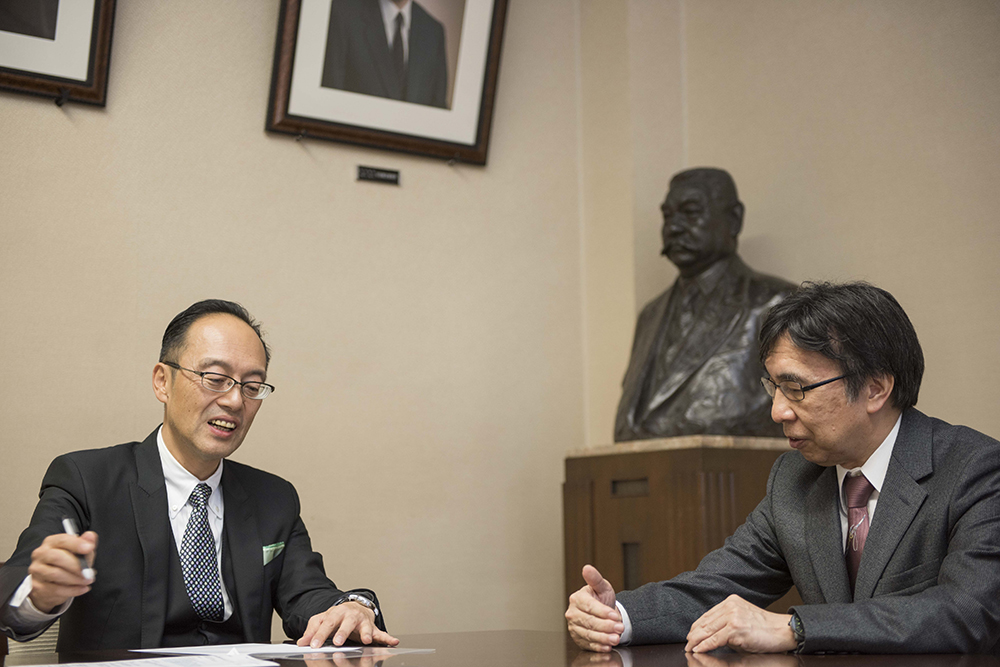
 Thank you for giving me this opportunity to be interviewed. Dr. Oya was a great interviewer and was able to effortlessly drawing out core issues. The hour passed by in the blink of an eye. As many people have to yet to find out about us, even within the university, I believe it is important to share the mission of the CTR. I am looking forward to seeing Dr. Oya play an active role as the CTR's Director of the Communications. Our center will proactively support any seed projects, even those that come from outside the university. I ask that researchers contact us at any time if they are interested in taking their basic research into actual practice.
Thank you for giving me this opportunity to be interviewed. Dr. Oya was a great interviewer and was able to effortlessly drawing out core issues. The hour passed by in the blink of an eye. As many people have to yet to find out about us, even within the university, I believe it is important to share the mission of the CTR. I am looking forward to seeing Dr. Oya play an active role as the CTR's Director of the Communications. Our center will proactively support any seed projects, even those that come from outside the university. I ask that researchers contact us at any time if they are interested in taking their basic research into actual practice.
Hideyuki Saya, MD Ph.D.
Director of Keio University Hospital Clinical and Translational Research Center
 After having this interview, I now have a better understanding of Dr. Saya's passion behind leading the CTR. I am currently preparing for investigator initiated clinical trials, and one thing I can say is that preparation requires tremendous amounts of time and effort. But thanks to the staff members of the CTR, this trial is moving forward smoothly. I can only imagine how difficult it must have been for Dr. Saya to put this team together from scratch. He is a diehard supporter of the next generation of doctors and researchers. This center is the manifestation of his passion. I am hopeful that something revolutionary will come of this center if doctors, especially those early on in their careers, will utilize its resources.
After having this interview, I now have a better understanding of Dr. Saya's passion behind leading the CTR. I am currently preparing for investigator initiated clinical trials, and one thing I can say is that preparation requires tremendous amounts of time and effort. But thanks to the staff members of the CTR, this trial is moving forward smoothly. I can only imagine how difficult it must have been for Dr. Saya to put this team together from scratch. He is a diehard supporter of the next generation of doctors and researchers. This center is the manifestation of his passion. I am hopeful that something revolutionary will come of this center if doctors, especially those early on in their careers, will utilize its resources.
Mototsugu Oya, MD Ph.D.
Vice Director of Keio University Hospital
